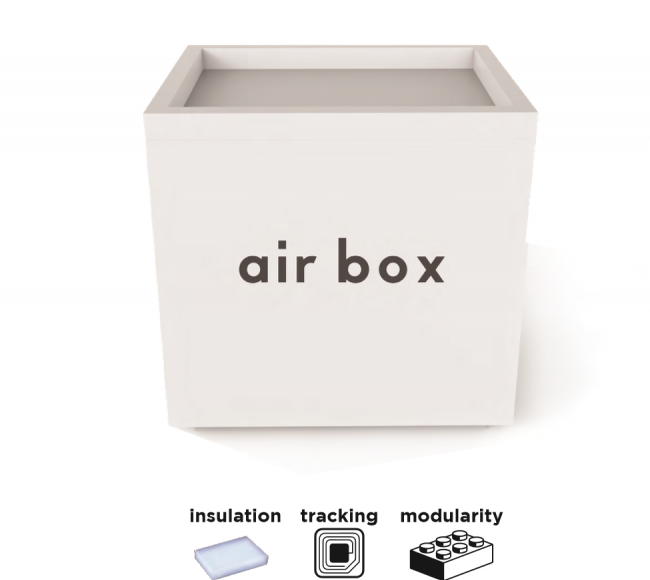
Project Description
Challenge: How might we home deliver food in a new way that maintains the food cold, at a selected
temperature, ensuring its safety?
Our challenge is centred into delivering food supplies (perishable and non-perishable) in good conditions ensuring its safety. After analysing the current scenario doing interviews and benchmarking other company’ s activities we have redefined the problem considering both the role of retailers and the users. Home delivery is not profitable for retailers for many reasons: delivery business’ s margins are very low, logistics systems have a highly centralized structure which makes the whole system very rigid and always adds more steps to deliver the package at home, legislation puts a lot of restrictions on delivery and the service is perceived by the users as a costly advantage. From the user’ s perspective, the service has several problems. First, many companies give a two-hour window to deliver and consumers have to wait at their place to receive the goods without to knowing the exact time. Second, many consumers are concerned about the quality of the food received. They feel the retailers give them low quality food. In this way, we present a solution that makes the delivery process profitable for retailers without changing their supply chain, whereas we have relieved shoppers from the frustration of waiting at home for the shipment of their grocery. This result has been achieved by employing different insulating technologies. Indeed, we have developed a unique process which allows to combine silica aerogel (an insulating material) with paraffin-based phase-change materials (a heat absorber). This specific combination of materials is able to maintain constant the temperature of refrigerated/chilled foods, therefore preserving the safety and freshness of perishable items. Besides insulating materials, our boxes are also equipped with sensors and RFID (radio-frequency identification) devices for providing information in real time for both retailers and shoppers. Retailers will receive information related to the delivery route and safety condition of the various food items, whereas shoppers will be continuously updated about the delivery time.